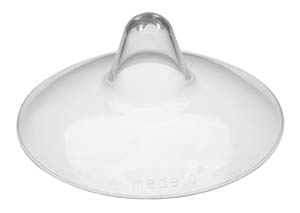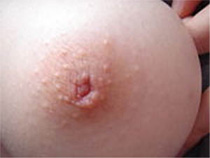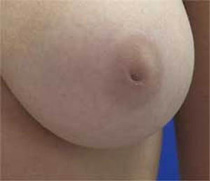Breast Pumps, Nipple Shields, Hooter Hiders...Oh, My!
By: Kimmelin Hull, PA, LCCE | 0 Comments
As a childbirth educator, I frequently receive letters, pamphlets, postcards and, yes, the occasional free sample of products targeted toward the expectant and new mother. One particularly popular category of said products includes those revolving around breastfeeding.
As breastfeeding (thankfully) continues to re-gain momentum in our culture, so do the products which are developed for and marketed to breastfeeding mothers.
But what about these products? Which ones are necessary? Which ones are helpful? A luxury? Superfluous? Unnecessary? Ultimately unhelpful to the breastfeeding process?
As is with life in general, the answers to the above questions represent a slippery slope - the grade of that slope largely dependent upon the dynamics going on between each mother-baby duo.
Here is a non-exhaustive list of the types of breastfeeding-related products out there:
clothing:
-nursing bras, shirts, tank tops, gowns, pajamas, etc.
over-clothing accouterments meant to cover up the nursing mom and baby:
-Hooter Hiders, Baby Bond drapes, screens, slings, wraps, cloths, blankets, etc.
sore nipple treatment products:
-ointments, creams, gel pads, nipple shields and shells
leaking breasts:
-breast pads, nipple shells/covers
breastfeeding aids:
-nipple shields, nipple shells, tube feeding systems, syringes, cups,
breast pumps:
-one- and two-flanged, manual, automatic, hospital grade, hands-free pumps...
With all this equipment out there, how does a woman choose which of these items is important to have on hand upon baby's arrival, and which products represent little more than a marketing ploy aimed at capturing the dollars of vulnerable, new parents?Which items ultimately have an influence on how we collectively view breastfeeding in our culture, which ones truly support the breastfeeding process, and which ones complicate it?
As documented and/or suggested in several recent studies (one being Kathleen Buckley's A Double-Edged Sword: Lactation Consultants' Perceptions of the Impact of Breast Pumps on the Practice of Breastfeeding, as appeared in the Spring 2009 issue of The Journal of Perinatal Education and covered on this blog) a large percentage of American women view breast pumps as a necessary item on the to-get list prior to baby's arrival. The implicated assumption being: in order to achieve breastfeeding success, one must employ the use of a mechanical pump at some point, rather than encouraging the baby to perform the job of drawing milk from the breast on his or her own.
Of course, complicating this issue is the higher and higher percentage of women returning to work within a month or two of their baby's births. Whether by choice or by lack of adequate maternity leave, more women are trying to keep up with the practice of breastfeeding they so desire, all the while tending to their uncompromising duties at work ('work,' in this case, meaning financially reimbursed duties outside the home).
But here's a seemingly little known secret: in most cases, whether returning to work or not, long-term breastfeeding success usually depends on less accouterments than more. And early introduction of tools like breast pumps (before, say, three weeks postpartum) and nipple shields? They actually decrease a woman's likelihood of achieving long term breast feeding. (By long term, I mean, say, longer than a few months.)
Breast pumps, specifically, have some potential drawbacks: Unless a woman has an extraordinarily abundant milk letdown reflex, it is difficult to express a whole heck of a lot of milk via a breast pump. Believe me. I know. I struggled for months at trying to get a breast pump to work for me, just to build up that little reserve of breast milk in the freezer for the occasional date night out or, way back when, a shift at work that kept me away from the baby beyond nursing time.
And because breastfeeding is a supply and demand system, the more you rely on the pump to generate milk for your baby, the less milk is being drawn from the breast. Less milk 'demand' equals less milk production. Within a relatively short period of time (the body responds to a change in the supply-demand system within 24-48 hours) the woman begins to notice a decline in her milk supply. Add to that, the visual image of how much milk is showing up in the bottle after any one pumping session (again, much less milk will come out into the bottle via the pump than would otherwise end up in the baby's tummy via baby-to-breast feeding) and the woman starts to doubt her ability to feed her child.
Can breast pumps save the nursing trajectory for some moms and babies? Sure. There are a variety of scenarios in which breast pumps can undoubtedly be useful and helpful. But that degree of assistance only goes as far as the knowledge of how to keep a woman's milk supply up while also relying on the breast pump (basically, by adding in some extra stimulation of the breasts - a couple extra nursing sessions with the baby, or extra pumping sessions beyond the frequency of the baby's normal nursing pattern).
And how about other items like nipple shields, an increasingly popular tool distributed by more and more lactation consultants?

Are these tools the magic bullet they are so often made out to be? Or is this a case of mistaken identity or, worse yet, blind acceptance of half truths fed to us by medical supply company salespeople working on commission? In many cases, are products like nipple shields a divergence away from addressing, and treating, whatever the true problem is in a challenged breastfeeding situation? Here is an excellent article that addresses these questions.
Whether it be in the realm of pregnancy, labor and delivery or breastfeeding, I see us as a general population more and more often taking the band-aid approach versus addressing underlying issues, problems and concerns head-on and dealing with them proactively and efficiently. Going back to the nipple shield example: if a baby and mother are having difficulty with breastfeeding due to a poor latch (the most common cause of breastfeeding woes) it's easy to hand over a nipple shield which, when used carelessly, encourages the baby to latch on to the teat of the shield only and draw milk via isolated suction rather than suction plus significant jaw and tongue motion. (watch this video clip and this for the proper manner in which a baby ought to latch on to the breast)
While nipple shields can temporarily help women with the most severe cases of inverted nipples:

or flat nipples:

there is not a strong indication for the frequent or regular use of nipple shields in most other situations. The risks, however, are plentiful, as described in the article referenced above.
Of less severity are some of the other products mentioned: special nursing clothes, drapes, etc. meant to hide mom and baby as much as possible from public view while breastfeeding. Here, I realize, I'm opening up an enormous can of worms but... what the heck, the can is already open, right?
How many folks, when preparing to purchase one of the dozen different nursing cover-ups, stops to think about why they feel compelled to add one of these things to their collection of baby stuff? If it's purely a matter of mother's modesty than, have at it. But if it's a concern over what other people think about the act of a woman feeding her child, well... couldn't one argue that the mass production and marketing of breastfeeding cover-ups only furthers our culture's still often distorted and prudish views of breastfeeding?
So, if you've made it to the end of this post, you're likely looking for a conclusion. My conclusion would be this: think carefully about the products you buy in regards to feeding your child. Think even more carefully about the products you recommend to an expectant, new and/or nursing mother. Consider who will ultimately win at the end of that purchase: The mother? The baby? The company who has happily sold another well-marketed product?
Published: September 18, 2010
Tags
SensibilityProfessional Resources